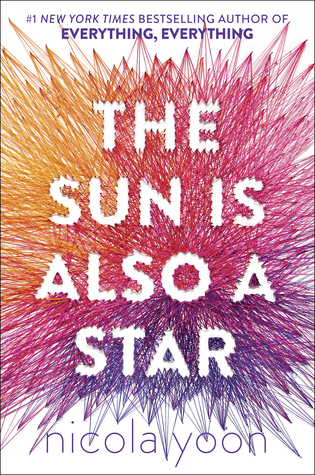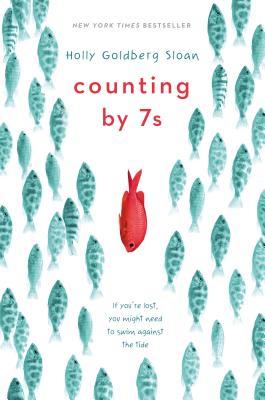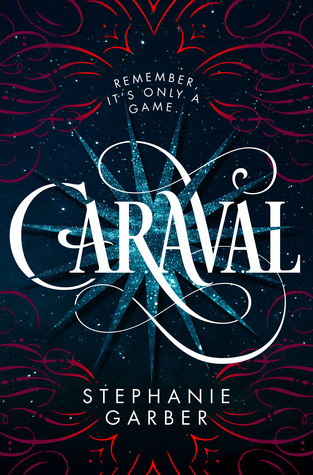 The cover of The Education of Margot Sanchez by Lilliam Rivera is magnificent. It reminds me of the sketches my high school classmates used to do in their notebooks during math lectures. It portrays a girl who looks confident, is full of chutzpah, and is ready to tell it like it is. Even from the cover, it feels like she is staring me down.
The cover of The Education of Margot Sanchez by Lilliam Rivera is magnificent. It reminds me of the sketches my high school classmates used to do in their notebooks during math lectures. It portrays a girl who looks confident, is full of chutzpah, and is ready to tell it like it is. Even from the cover, it feels like she is staring me down.Unfortunately, Margot Sanchez is no such girl. She is selfish, entitled, short-sighted, and hypocritical. She pawns a truly original sense of personal style, her natural hair texture (and endless hours of her free time forsaking her natural hair texture), the music she truly loves, and many other vestiges of her actual personality in an attempt to fit in with a couple of popular girls at her private school where diversity means blonde or redhead. Rivera missed some golden opportunities for characterization of Serena and Camille (Somerset Prep's watered-down answer to The Plastics), basically giving them both flat rich mean girl personalities with no soft spots or motivations behind popularity and selfish indulgence. *Spoiler alert.* And, though Margot eventually has the predictable moment where she shows them at least a little of her true self and reclaims a bit of her old independence, it is far from the fully satisfying, completely honest, tell-it-like-it-is call out session their fair-weather friendship deserved, which was a real letdown. The firework of that storyline's resolution had a loud bang and a very tiny spark.
Margot is stuck working over the summer in her family's grocery store to pay her parents back for the $600 worth of preppy clothing she charged without their permission. (And yet, even though this is a book about a teenage girl in which clothing is discussed several times, the details of her purchases during this shopping spree are barely mentioned.) Also? She is inexplicably required to labor and earn an additional $2000 (for school fees?) which is somehow supposed to make sense. This explanation is randomly dropped into the story too late. Her family having trouble paying to send her to private school is never mentioned. It just seems like a strange addendum to her punishment, as if added to draw out the time she spends at the store for plot reasons. One minute, the confused narrative makes it seem like the Sanchez family is well-off, or at least upper middle-class. Mere pages later, the reader is told that the Sanchez family grocery stores are struggling. Which is it? In a family where issues are never brought to light, discussed honestly, and resolved (thus allowing for character development and an understandable resolution), the real financial situation of the Sanchez family--a major factor in this book--is never clearly defined. It just bounces back and forth between "very comfortable but not rich" and "struggling" depending on what is most convenient for the plot point happening at that moment. We as readers are supposed to believe that Margot's parents aren't upset that she spent $600 on clothing, but that they care only because she took it without asking. However, when she wants a $1 bag of M&Ms in her family's store, she is expected to pay for them herself? None of this adds up.
Another issue is that the book just contains too many subplots, and none of them are resolved in a complete or satisfying way. I understand that it is an important aspect of the book to show how Margot (like many girls her age) is experiencing pressure from all sides: parents, old (real) friend, new (fake) friends, new school and trying to fit in, the prospect of relating to guys, her family's finances, cultural stereotypes (from the outside and from within her own culture), and judgments going and coming. But so many sideplots are opened up and seem like they are going to be well-developed, only to be swiftly swept under the rug at the close of the narrative as Margot's story resolves itself.
But my main complaint about what The Education of Margot Sanchez lacks is that so many of her bad decisions feel random. Margot's interior monologue is poorly developed, and the reader is left out of thought processes crucial understanding and empathizing with Margot's character. When she is in the midst of making an important choice, the narrative simply seems to flit from her knowing or thinking that she shouldn't do whatever it is she is about to do right to her doing that thing, without her stopping to consider the consequences or the feelings of guilt, shame, or regret her actions might cause her later. She has forsaken who she actually is, but no thoughts of how much she actually does enjoy the things she used to be honest and open about liking are shared with the reader.
For example, when Margot reluctantly attends a concert featuring music she and her old (read--actual) friend really loved, she talks about how she only listens to the music Serena and Camille's tastes dictate now, but the book never catches her singing along to the lyrics, stopping herself from dancing, or even tapping her toe surreptitiously. Margot looks through an old Instagram account, recalling how freely she used to indulge her personal sense of style, but we never see her pull out one of those old outfits and try it on, even in the privacy of her own room. With more serious choices that could (and do) have more serious consequences, Margot seems to know that she doesn't or shouldn't want to do the wrong thing, but then she follows along the path of making that bad choice without any further reflection, making even her rebellion feel passive and the book's resolution feel just as passive, and like it glossed over issues addressed in the plot. Rivera periodically includes short snarky lists compiled by Margot, such as things she hates, things she'd rather wear than a hairnet, or things that are really hard, but this convention isn't ubiquitous enough throughout the book for it to become a running joke, so it feels jarring when one is included, and out of place when another character mentions it like this is something Margot is known for doing. If these are supposed to stand in for the in-depth look into Margot's interior world that the book so badly wanted, they failed.
However, The Education of Margot Sanchez did one thing quite well: the way Rivera explained the concept of gentrification to her YA audience (who might not have been familiar with the term) was artful, and never condescending or boring. Twining it with a scene where flirty tension filled the page made it feel less like a civics lecture and more like the prelude to a date. Also, showing both sides of the story when real estate developers want to purchase an old apartment building full of low-income residents and turn it into a shiny new block of condos meant that Rivera gave her readers a deeper context for the struggles of the Sanchez family as owners of the main grocery store in that neighborhood. By unpacking the potential positives and negatives for all of the players involved and allowing Margot to take the roll of cool customer, unready to subscribe to a specific point of view on the issue, Rivera used a relevant issue I've never seen explained well in YA to heighten the stakes for all parties involved.
Ultimately, this book was a letdown. It was hyped so much on Twitter and Book Riot and after reading it, I'm perplexed as to why. I'm all for fun, light reads at times, but this wasn't that. It was a book that swept most of the serious issues it brought up under the rug in favor of more superficial details, which made for a frustrating reading experience. It used real problems as plot points and then discarded them as soon as a new one was added to the mix, instead of truly working through them to bolster the dynamic character arc Margot could have had.












